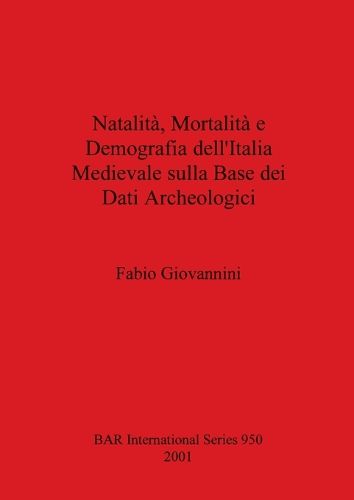Readings Newsletter
Become a Readings Member to make your shopping experience even easier.
Sign in or sign up for free!
You’re not far away from qualifying for FREE standard shipping within Australia
You’ve qualified for FREE standard shipping within Australia
The cart is loading…






This title is printed to order. This book may have been self-published. If so, we cannot guarantee the quality of the content. In the main most books will have gone through the editing process however some may not. We therefore suggest that you be aware of this before ordering this book. If in doubt check either the author or publisher’s details as we are unable to accept any returns unless they are faulty. Please contact us if you have any questions.
This study of birth-rates, death-rates and demography in Medieval Italy challenges many traditional assumptions based on documentary evidence. Giovannini looks instead at archaeological evidence from the 6th to 14th century and reaches a number of interesting conclusions - the death-rate for 0-5 year olds is not as high as previously thought; a small percentage of the population lived beyond the age of 50. Like many other parts of Europe, factors such as famine and disease do not seem to have been prevalent until the later medieval period. Text in Italian with English and French abstracts.
$9.00 standard shipping within Australia
FREE standard shipping within Australia for orders over $100.00
Express & International shipping calculated at checkout
This title is printed to order. This book may have been self-published. If so, we cannot guarantee the quality of the content. In the main most books will have gone through the editing process however some may not. We therefore suggest that you be aware of this before ordering this book. If in doubt check either the author or publisher’s details as we are unable to accept any returns unless they are faulty. Please contact us if you have any questions.
This study of birth-rates, death-rates and demography in Medieval Italy challenges many traditional assumptions based on documentary evidence. Giovannini looks instead at archaeological evidence from the 6th to 14th century and reaches a number of interesting conclusions - the death-rate for 0-5 year olds is not as high as previously thought; a small percentage of the population lived beyond the age of 50. Like many other parts of Europe, factors such as famine and disease do not seem to have been prevalent until the later medieval period. Text in Italian with English and French abstracts.